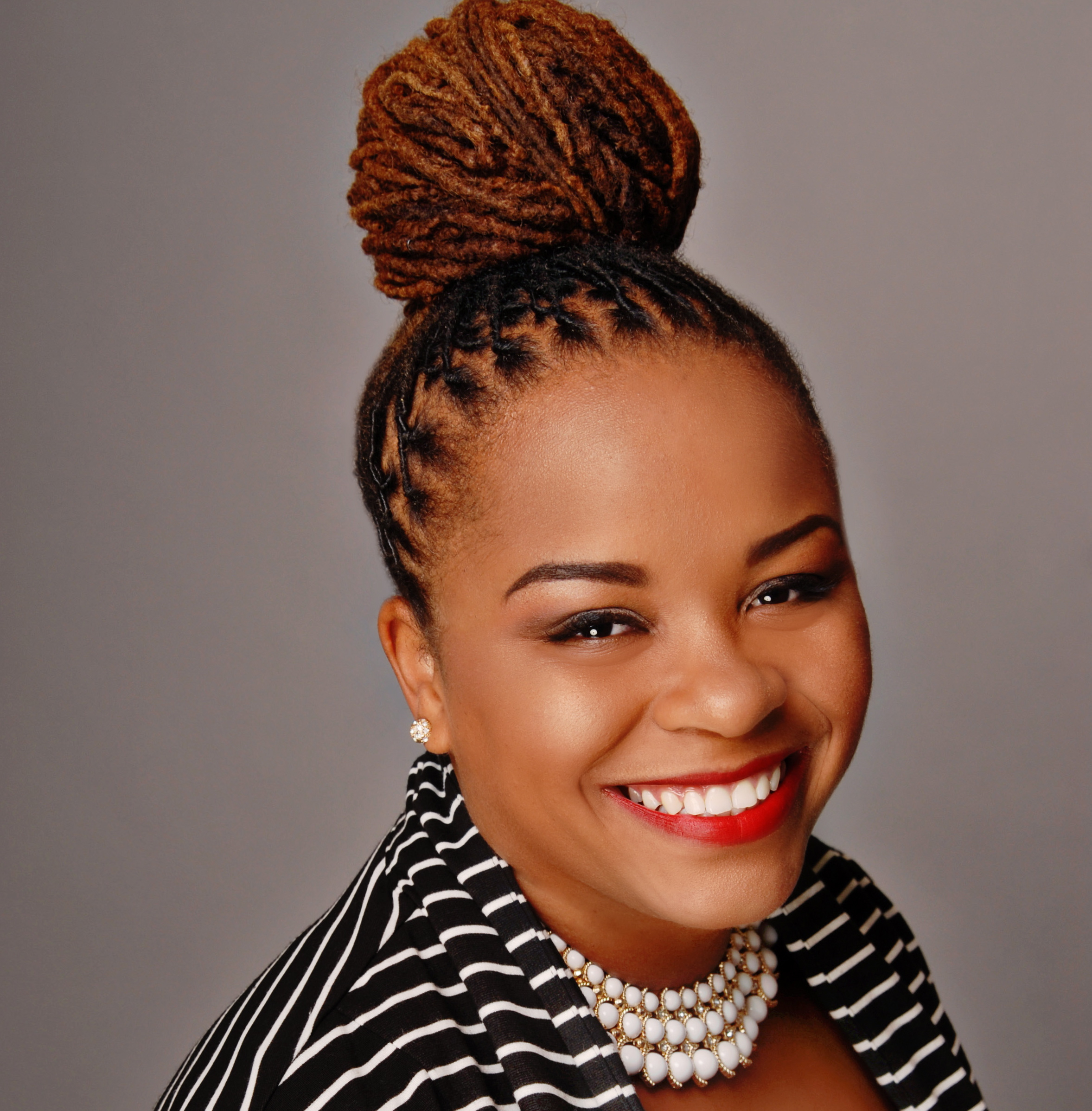†From May 29 through June 30, Theater J will be presenting Jacqueline E. Lawton’s “The Hampton Years” at Washington DC Jewish Community Center’s Aaron & Cecile Goldman Theater in Washington, D.C. “The Hampton Years” chronicles the relationship of Austrian Jewish Viktor Lowenfeld, a professor at Virginia’s Hampton Institute and two of his now most-famous students, John Biggers and Samella Lewis. The play, like its subjects, has deep black college roots which it explores with beauty, dignity and courage.
HBCUSTORY Founding Editor Crystal A. deGregory, caught up with the D.C. playwright to discuss the play and her work as one of the nation’s leading black playwrights.

HBCUSTORY: What inspired your interest in these African-American artists in general and their connection to this period at Hampton in particular?
Jacqueline E. Lawton: The Hampton Years was originally conceived in November of 2010 after a conversation with Shirley Serotsky, Theater J’s associate artistic director. I had attended a reading at the Lincoln Theatre, which was part of Theater J’s “Backstage at the Lincoln” reading series. After the reading, I asked Shirley about the reading series, because I wanted to learn more about Theater J’s interest in plays that explored the Black-Jewish relationship. I was quite moved by their commitment and wanted to figure out how I could contribute.
Later that night…by candlelight really as it was around 2:00am, I did a bit of research and stumbled across the Beyond Swastika and Jim Crow Exhibit. It was here that I that learned about art professor Viktor Lowenfeld and his student John Biggers and became intrigued about what life was like for Blacks and Jewish people in the segregated South. What’s more, I found this amazing, profound and inspiring quote by John Biggers, which now serves as the inscription to The Hampton Years:
“A new dawn challenges this world and demands the salt of every one of us. There can be no doubt of our sodality, for in each of us we reflect one another’s image, and our composite image mirrors the tragedy and the comedy of the whole human race.” ~John Biggers

HBCUSTORY: From that conversation to the world premiere, which opens to previews on May 29th, can you talk about the process of developing the script?
JEL: In May of 2011, Theater J’s Director of Literary and Public Programs Shirley Serotsky, contacted me about submitting a proposal for their first ever Locally Grown: Community Supported Art From Our Own Garden festival. I submitted The Hampton Years and it was commissioned as part of the festival. The first public reading was in January over Dr. Martin Luther King, Jr. weekend January 2012. Theater J’s Artistic Director Ari Roth and Shirley Serotsky both loved the play and saw enormous potential in it for their season.
In June, we met to discuss further rewrites and presented the next draft at the Kennedy Center’s Page-to-Stage Festival over Labor Day Weekend. Between that, we had auditions and I wrote two new scenes, created to new characters for the play.
We met again for a Tea at Two reading in October and then Theatre Ariel, which is based on Philadelphia, presented two readings of it, one as part of their Salon Reading Series and the other in conjunction with the Nation Museum of American Jewish History’s Beyond Swastika and Jim Crow’s exhibit. In April, we had a reading at the Phillips Collection and I did another set of rewrites ahead of our First Rehearsal, which was on April 29th
Rehearsals have been so wonderful, rich and productive. My artistic team, which includes director Shirley Serotsky and dramaturg Otis Cortez Ramsey-Zoe have been incredibly supportive and encouraging. I’m excited to see the Design Run next week and can hardly wait until we have audiences.
HBCUSTORY: What can you share about the histories of the artists your play features?
JEL: The artists in this play are extraordinary and inspiring.
In 1938, Austrian Jewish Professor Viktor Lowenfeld and his family escaped to England after German Nazi’s invaded Vienna. They traveled to New York and later, moved to Virginia, where Lowenfeld taught psychology and art classes at the Hampton Institute (now Hampton University). There, he established an art department at Hampton and inspired the careers of many burgeoning artist, including John Biggers and Samela Lewis. In 1946, he became chairman of Pennsylvania State College (now the Pennsylvania State University) and taught there until his death in 1960.

 In 1941, John Biggers enrolled at Hampton intending to become a plumber. However, after hearing an inspiring speech by Viktor Lowenfeld, Biggers enrolled in an evening art class and set a new course for his life. During his time at Hampton, he also studied with artist Charles White. After serving in the United States Navy, Biggers returned to Hampton and later enrolled in Pennsylvania State University (where Lowenfeld had relocated). In 1949, Biggers moved to Houston, Texas, where he founded and then chaired the art department at Texas Southern University.
In 1941, John Biggers enrolled at Hampton intending to become a plumber. However, after hearing an inspiring speech by Viktor Lowenfeld, Biggers enrolled in an evening art class and set a new course for his life. During his time at Hampton, he also studied with artist Charles White. After serving in the United States Navy, Biggers returned to Hampton and later enrolled in Pennsylvania State University (where Lowenfeld had relocated). In 1949, Biggers moved to Houston, Texas, where he founded and then chaired the art department at Texas Southern University.
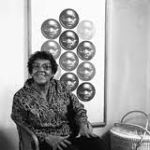 Elizabeth Catlett attended Howard University and was the first student to earn an MFA degree in sculpture from the University of Iowa (1940). She studied ceramics at the Art Institute of Chicago and lithography at the Art Students League in New York. In 1941, while teaching at Dillard University in New Orleans, Catlett and Charles White were married and both taught at Hampton. In 1947, Catlett produced her first major show “I am a Negro Woman,” through a Julius Rosenwald Foundation fellowship.
Elizabeth Catlett attended Howard University and was the first student to earn an MFA degree in sculpture from the University of Iowa (1940). She studied ceramics at the Art Institute of Chicago and lithography at the Art Students League in New York. In 1941, while teaching at Dillard University in New Orleans, Catlett and Charles White were married and both taught at Hampton. In 1947, Catlett produced her first major show “I am a Negro Woman,” through a Julius Rosenwald Foundation fellowship.
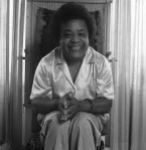 Samella Lewis studied printmaking at Dillard University, under Elizabeth Catlett. Later, Lewis transferred to Hampton, where she earned her B.A. degree in art history (1945). She earned her M.A. degree at The Ohio State University in 1948, and in 1951 she became the first African-American woman to receive her doctorate in fine arts and art history. At Hampton, Lewis started the International Review of African American Art and later founded the first African American-owned art publishing house, Contemporary Crafts.
Samella Lewis studied printmaking at Dillard University, under Elizabeth Catlett. Later, Lewis transferred to Hampton, where she earned her B.A. degree in art history (1945). She earned her M.A. degree at The Ohio State University in 1948, and in 1951 she became the first African-American woman to receive her doctorate in fine arts and art history. At Hampton, Lewis started the International Review of African American Art and later founded the first African American-owned art publishing house, Contemporary Crafts.
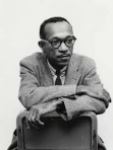 Charles White studied at the Chicago Art Institute and the Art Students League. He worked with the Works Project Administration (WPA) and was inspired to shift the how Black America was portrayed in art. In 1941, White married sculptor Elizabeth Catlett while at Dillard in New Orleans. He was awarded a fellowship from the Julius Rosenwald Foundation to study Southern Black culture and created his best known work, The Contribution of the Negro to American Democracy while at Hampton.
Charles White studied at the Chicago Art Institute and the Art Students League. He worked with the Works Project Administration (WPA) and was inspired to shift the how Black America was portrayed in art. In 1941, White married sculptor Elizabeth Catlett while at Dillard in New Orleans. He was awarded a fellowship from the Julius Rosenwald Foundation to study Southern Black culture and created his best known work, The Contribution of the Negro to American Democracy while at Hampton.
HBCUSTORY: Can you share with us the importance of Hampton and other black colleges to the tradition of black cultural and artistic expression?
JEL: Samella Lewis tells the story of how one of her professor at University of Ohio told her that putting black people in her painting would degrade her work. Quite simply and profoundly, black colleges like Hampton were a place where students were respected and their work was honored, cultivated and validated.
HBCUSTORY: What is the state of American theatre today . . . and your role in it?
JEL: It’s an exciting time in the American Theatre, however, many organizations are struggling to build audiences and sustain funding. In order to build and keep audiences, we need to value theatre’s essential contribution to our economy and society. We must infuse the ritual of theatre going as a part of our culture. It’s more than going to Broadway. It’s about being in the audience of your local and regional theaters. It’s about serving on boards, giving annual donations, and being an advocate for theatre. It starts in childhood, continues through middle and high school, and must be a part of the academic experience. Otherwise, as young adults, parents and empty nesters, we won’t know to make it part of our lives.
HBCUSTORY: Can you speak about the issues of racial and gender diversity?
JEL: The issue of racial and gender diversity is bigger than the entity of theatre, but what better place to address it than on the stage? What other art form offers an intimate portrayal of the strange, beautiful, curious, brave and vulnerable human experience. On stage, we can see unfold the various ways in which we live and die; of how we behave towards one another in love and hate; of the immediate and residual impact of our decisions; of the damaging and devastating consequences of our neglect; and the joy and glory of our good deeds. In order to do this with as deep, rich, full and complete a picture as possible, we must rid our theatre offices, rehearsal halls and stages of race and gender discrimination. These issues are very important to me. Currently, I’m curating a blog on Diversity and Inclusion for Theatre Communication Group ahead of the National Conference this June. We must enlighten ourselves to this reality and do better.

HBCUSTORY: Why do many regional theaters consider new plays so risky?
JEL: There’s no guaranteed outcome of success. But we must remember that at one point in time all of the much beloved, tried and tested classics were once new. Someone took a chance on them and allowed these plays to show us the world in a way that we had never seen before. Also, it’s never fair to compare the reception of one new play to that of another. It undermines the audience, the artists, and the producing theater.
HBCUSTORY: What do you hope patrons learn from the production?
JEL: I hope this play honors the lives and legacy of these great artists. In it, we witness their early struggles and achievement, their flaws and brilliance. I hope the audience walks away inspired by their lives, legacy and careers.
HBCUSTORY: What do you hope the production achieves?
JEL: The Black and Jewish relationship is deep and complex. We have danced, prayed and wept together. We have marched arm-in-arm demanding equality, justice, and civil rights. We have fought against one another, standing at arm’s length in hatred, mistrust and confusion. I look forward to a time of healing in our respective communities and hope that this play can contribute to that process.
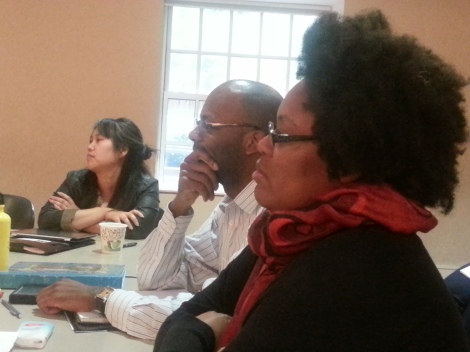
HBCUSTORY: What’s next for you as a playwright?
JEL: Currently, I’m working on two plays:
• NOM DE GUERRE – a sociopolitical coming of age drama that follows best friends, Jude and Myra, from college freshman to middle age and addresses the war on women, the challenges of PTSD and the ever-changing role of women in society. I’m in the process of researching and writing it as part of Arena Stage Playwrights’ Arena.
• OUR MAN BEVERLY SNOW – chronicles the events surrounding a race riot that cripples the nation’s capital and sheds a light on how freedom of speech, the abolitionist movement and the determination of a people in bondage shaped the nation.. I’m working on the 3rd draft and am looking for places to develop it further.
Jacqueline E. Lawton was named one of 30 of the nation’s leading Black playwrights by Arena Stage’s American Voices New Play Institute. Her plays include: Anna K; Blood-bound and Tongue-tied; Deep Belly Beautiful; The Devil’s Sweet Water; The Hampton Years; Ira Aldridge: the African Roscius; Lions of Industry, Mothers of Invention; Love Brothers Serenade (2013 semi-finalist for the Eugene O’Neill Theater Center’s National Playwrights Conference), Mad Breed, and Our Man Beverly Snow. She received her MFA in Playwriting from the University of Texas at Austin, where she was a James A. Michener Fellow. She participated in the Kennedy Center’s Playwrights’ Intensive (2002) and World Interplay (2003). Ms. Lawton is a 2012 TCG Young Leaders of Color award recipient and a National New Play Network (NNPN) Playwright Alumna. She has been nominated for the Wendy Wasserstein Prize and a PONY Fellowship from the Lark New Play Development Center. A member of Arena Stage’s Playwright’s Arena and the Dramatist Guild of America, Ms. Lawton currently resides in Washington, D.C.
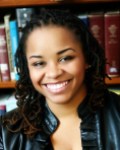 A 2003 graduate of Fisk University, Crystal A. deGregory, Ph.D. is the founder and executive editor ofHBCUstory, Inc. an advocacy center presenting inspiring stories of the HBCUs past and present, for our future. She teaches in Tennessee State University’s department of history, political science, geography and Africana studies department. Follow her on twitter at @HBCUstorian.
A 2003 graduate of Fisk University, Crystal A. deGregory, Ph.D. is the founder and executive editor ofHBCUstory, Inc. an advocacy center presenting inspiring stories of the HBCUs past and present, for our future. She teaches in Tennessee State University’s department of history, political science, geography and Africana studies department. Follow her on twitter at @HBCUstorian.














